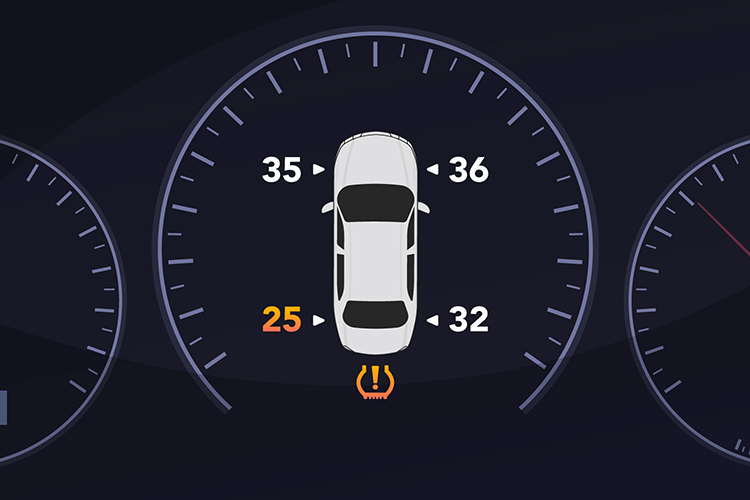How this technology works
Tire pressure monitors check the air pressure of all the wheels and alert the driver when a tire's pressure has dropped below a safe level.
Two types of systems are currently in use:
- One uses ABS sensors to measure the rotational speeds of the wheels. An under-inflated tire will have a slightly higher rotational speed
- The second directly measures the pressure with a wheel mounted pressure sensor in each wheel
Operation
The system is on when the engine is turned on.
Description
A dashboard display shows the level of pressure in each of a car’s tires. The back left tire pressure is too low, prompting an alert.
Things for drivers to keep in mind
- Make sure you understand the tire pressure monitoring system installed in your vehicle
- Some tire pressure monitoring systems provide a warning only when a tire is significantly underinflated. The tire may then be close to failure
- When a monitoring system warns that pressure is low, measure your tire pressure and inflate to the appropriate pressure
- Large temperature changes outside can cause the low tire pressure warning to come on
- A warning message that the system is malfunctioning will also come on if the tires are changed or the tires are rotated and the system is not reset
- When installing winter tires, be aware that the system may not work properly unless the correct type of pressure sensors for your vehicle are also installed
- If buying new rims, make sure the pressure sensors fit on the rims
- Newer tire pressure monitoring systems allow the driver to reset them
- Tire pressure monitoring systems do not replace the maintenance procedures recommended in the owner's manual
- You should continue to measure your tire pressure on a monthly basis
- You should read your owner's manual to learn about your vehicle's system, including its capabilities and limits
